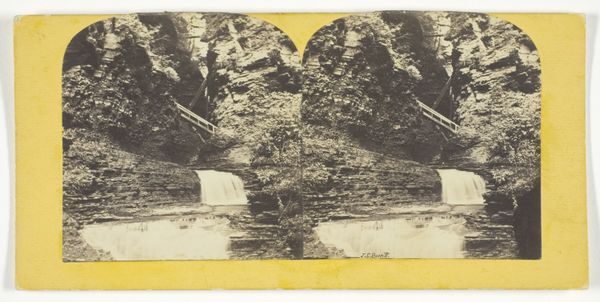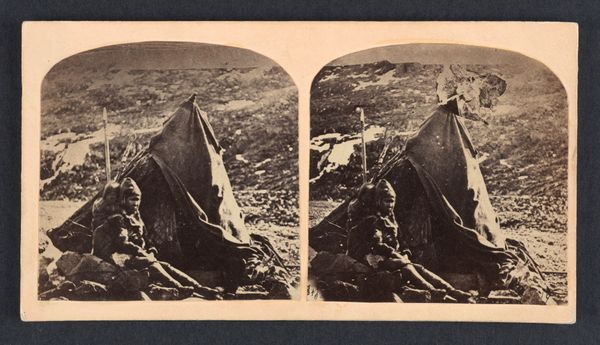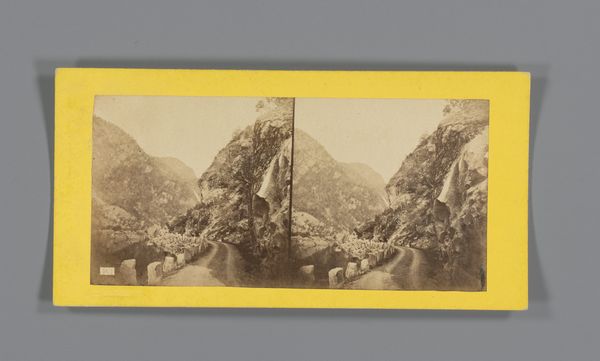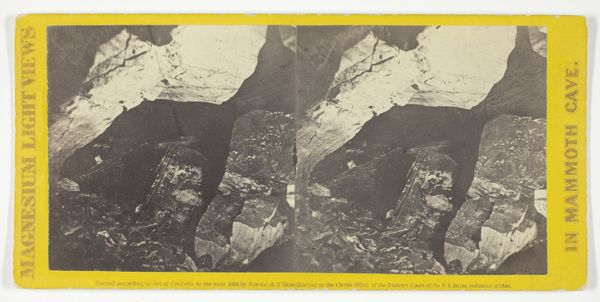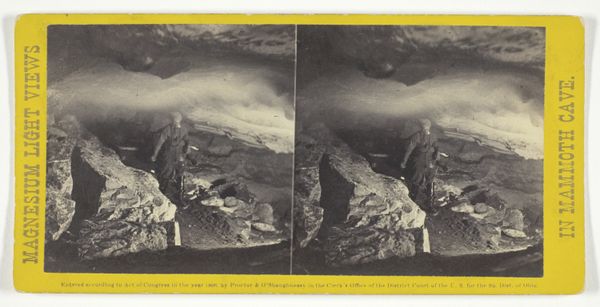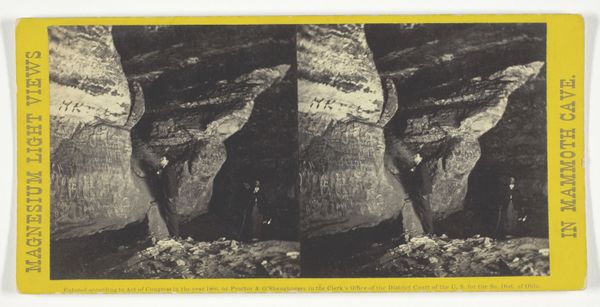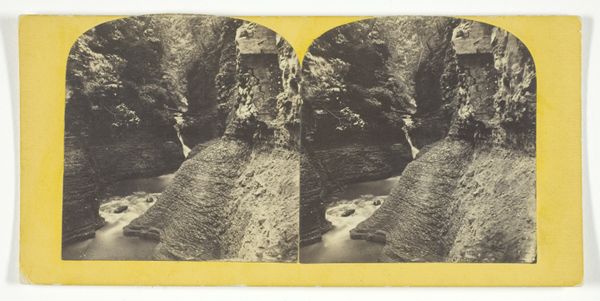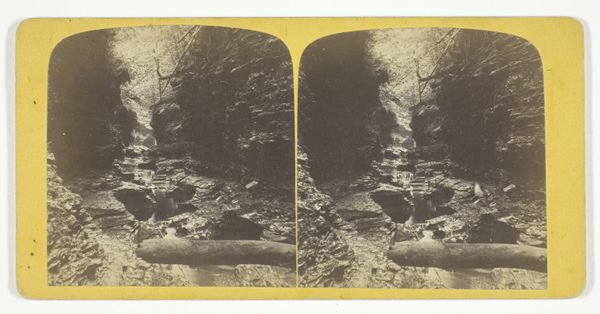
photography
#
landscape
#
photography
#
geometric
#
romanticism
Dimensions: 7.5 × 6.6 cm (each image); 8.4 × 17.4 cm (card)
Copyright: Public Domain
This stereoscopic image of Clamshell Cave, Staffa, was captured by G.W. Wilson using the wet collodion process, a technique that dominated photography in the mid-19th century. Creating such an image was labor-intensive: the photographer had to prepare, expose, and develop the plate within a short timeframe, while it was still wet. The process demanded not only technical skill, but also logistical planning, especially when working in remote locations like Staffa. Here, we see two figures posed in front of the cave’s basalt columns. The very act of capturing this image transformed the landscape into a commodity, a view to be consumed as a souvenir of travel. The stereoscopic format itself speaks to the era’s fascination with realism and technological advancement. By viewing the twin images through a special viewer, the scene would have sprung to life in three dimensions, offering a compelling illusion of presence. So, while photography is often considered an art, it also involves craft, industry and the politics of representation.
Comments
No comments
Be the first to comment and join the conversation on the ultimate creative platform.
